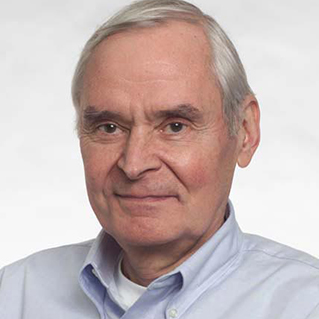
David Wilkinson (1935 – 2002)
Physics Professor - Princeton University
"David Wilkinson was a hero to those who knew and worked with him -- the sort of expert who could fairly claim to have made all the mistakes and yet learned from them; but he led by example and inspiration more than by detailed instruction. Dave was passionate about measurements, and he knew how easily Nature could fool our eager selves, so he was the ingenious skeptic who would not accept the quick and easy answer. He was sure that diligent inquiry was going to pay off with important discoveries, and his students and colleagues absorbed that attitude. It served them well, for they went many places and did wonderful things themselves."
-Excerpt from "National Academy of Sciences: David Todd Wilkinson: A Biographical Memoir"
NASA renamed an orbiting satellite, called the Microwave Anisotropy Probe, in honor of David T. Wilkinson, a pioneer in physics and cosmology, who died in September 2002.
The re-christened Wilkinson Microwave Anisotropy Probe (WMAP), launched in June 2001, observes the oldest light in the universe, called the cosmic microwave background (CMB). Patterns imprinted in this light, approximately 400,000 years after the big bang, reveal details about the age of the universe, the era of first starlight, and other key properties.
Wilkinson, a professor at Princeton University, N.J., was instrumental in defining CMB research from the days of its discovery in 1964 to his work as the WMAP Instrument Scientist, 38 years later. Both WMAP and its predecessor, the Cosmic Background Explorer (COBE), owe their existence in no small part to Wilkinson, whose decades' long research, enthusiasm, and tireless efforts played a major role in bringing these missions to life.
"Dave was a man of great integrity, an outstanding scientist, and a wonderful colleague," said Dr. Charles L. Bennett, WMAP Principal Investigator from the NASA Goddard Space Flight Center in Greenbelt, Md. "He loved to do science and he loved to teach science. As a teacher he was inspiring. As a scientist he set high standards and served as the conscience of the field," he said.
David T. Wilkinson (1935 - 2002), a pioneer in physics and cosmology, lived and went to school in Michigan. He received both his B.S. and M.S. in Engineering and his Ph.D. in Physics from the University of Michigan before coming to Princeton University to become a professor of physics. Besides teaching graduate course in physics David made time to teach undergraduate courses as well.
"[David] particularly enjoyed teaching the Princeton undergraduate introductory physics courses; he had a flair for presenting physics demonstrations that kept the students on the edges of their seats, and as always he took pleasure in the students' reactions, which they in turn could sense and appreciate," said colleagues John Mather and Jim Peebles.
"Dave's science often took the path less traveled, with results that have seeded large and active fields," said a 2003 memorial in Physics Today. "He showed by example that the experimenter's conscience can be the best defense against bad science. Dave embodied so much of what we aspire to as scientists and as people. His effortless charm and natural affinity for people, his generosity with time, and his total absence of self-promotion, brought out the best in all who were privileged to know him."
While a professor at Princeton, David made many discoveries. From the mid-1960s on, David was involved in almost every effort of measuring the faint echoes of the Big Bang, starting with receivers on the top of the university's buildings, then balloons, and then satellites. One echo is known as Cosmic Microwave Background radiation (CMB), which is leftover heat from the formation of the Universe. David was instrumental in defining CMB research from the days of its discovery in 1964. This led to his work as a scientist on the Microwave Anisotropy Probe Instrument (MAP) 38 years later. This satellite was renamed the Wilkinson Microwave Anisotropy Probe (WMAP) in his honor.
WMAP was launched in June 2001, and observes the oldest light in the Universe (CMB). Patterns imprinted in this light, approximately 400,000 years after the Big Bang, reveal details about the age of the Universe, the era of first starlight, and other key properties. Both WMAP and its predecessor, the Cosmic Background Explorer (COBE), owe their existence in no small part to Wilkinson, whose research, enthusiasm and tireless efforts played a major role in bringing these missions to life.
"Dave was a man of great integrity, an outstanding scientist, and a wonderful colleague," said Dr. Charles L. Bennett, WMAP Principal Investigator from NASA's Goddard Space Flight Center (GSFC) in Greenbelt, Md. "He loved to do science and he loved to teach science. As a teacher he was inspiring. As a scientist he set high standards and served as the conscience of the field," he said.
After a long struggle with cancer, David Wilkinson died on September 5, 2002. He was 67.
Planetary science is a global profession.

